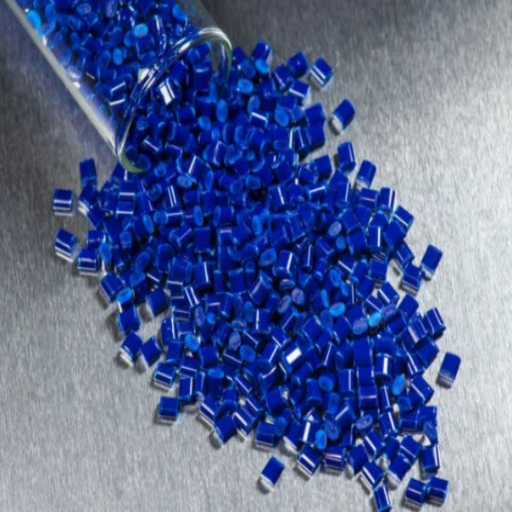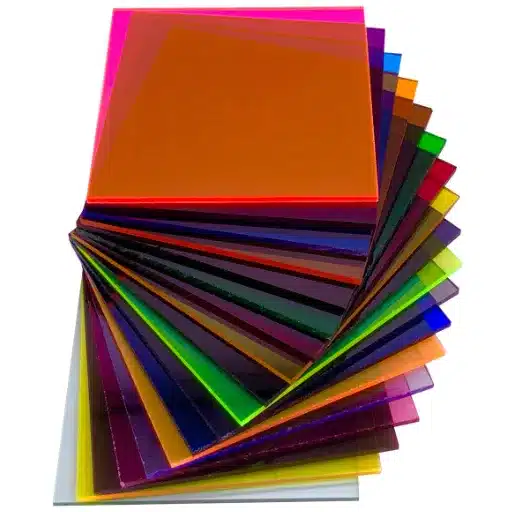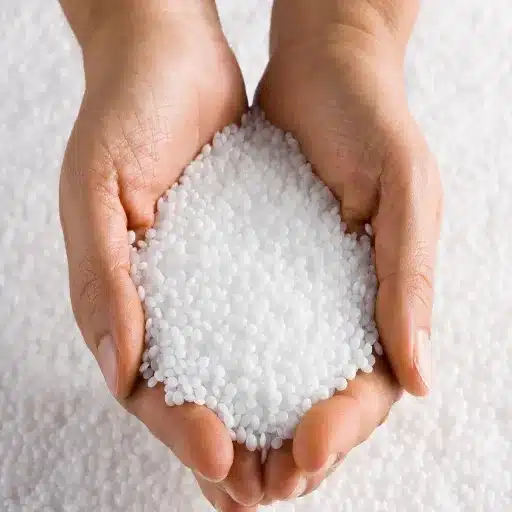Understanding the differences between thermoplastic elastomers and silicone would go a long way in material selection for manufacturing and product design. Consider that these two versatile materials are broadly used across industries, and choosing the wrong one would affect performance, cost, and eventually the success of an application. The guide provides further distinction between TPE and silicone based on their composition, characteristics, and applications. Depending on whether you are looking for flexibility, durability, heat resistance, or easy customization, this will shed light on your quest for an answer. Let’s examine how the two materials compare to each other, highlighting their benefits, limitations, and the primary areas where they excel.
Understanding Thermoplastic Elastomers and Silicone
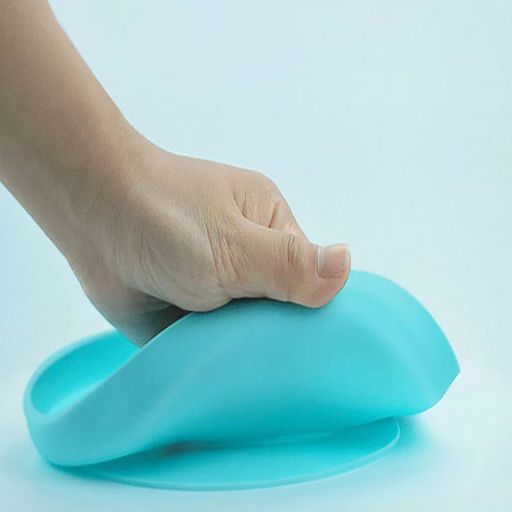
What is a Thermoplastic Elastomer (TPE)?
Thermoplastic elastomers (TPEs) are a class of materials that combine the elastic properties of rubber with the processability of thermoplastics. These versatile materials are composed of both hard and soft segments within their structure. The hard segments provide strength and durability, while the soft segments ensure flexibility and elasticity. TPEs are widely valued for their ability to be molded, extruded, or reused like plastics while maintaining the stretchy and resilient qualities of elastomers.
One of the standout features of TPEs is their recyclability. Due to their thermoplastic nature, they can be reheated and remolded without significant degradation, making them a more sustainable choice compared to traditional vulcanized rubber. Additionally, they exhibit high resistance to wear, fatigue, and chemicals, making them suitable for a wide range of applications, including automotive parts, medical devices, consumer goods, and sports equipment.
Key Advantage: TPE grades can be customized for specific applications, offering varying hardness, colorability, and processing options. An excellent blend of flexibility, toughness, and ease of manufacture makes TPEs an attractive material that industries opt for when seeking adaptable and environmentally friendly solutions.
What Is Silicone Rubber?
Silicone rubber is a widely used synthetic elastomer composed primarily of silicone, carbon, hydrogen, and oxygen. With excellent thermal stability, it can maintain its properties within a temperature range of -75°F (-60°C) to 500°F (260°C), making it suitable for applications in the most demanding environments, such as aerospace, automotive, and industrial machinery.
Its unique characteristics include high resistance to weathering, UV radiation, and aging, making it suitable for outdoor applications where durability is critical. Additionally, silicone rubber exhibits excellent electrical insulation properties, making it invaluable in the electronics industry. Available in a wide range of durometers and customizable formulations, silicone rubber can be tailored to meet the specific needs of various applications. These qualities, combined with their non-toxic and biocompatible nature, have led to significant adoption in the medical, food processing, and consumer sectors for products such as implants, gaskets, seals, and kitchenware.
Properties of TPE and Silicone
Thermoplastic elastomers, commonly referred to as TPE, and silicones exhibit distinct yet complementary properties. Knowing these unusual properties makes each one invaluable in one or more applications. Among other benefits, TPE presents superior flexibility, simple processing, and recyclability. It has the characteristics of rubber in construction purposes but is a thermoplastic for efficiency’s sake, making the manufacturing process much easier than an ordinary rubber, especially with injection molding. TPE exhibits good resistance to fatigue, abrasion, and a wide temperature range, making it suitable for use in automotive parts, sealing applications, and wearable devices. Since TPE weighs less than conventional rubber, it receives more recognition in industries that require lighter materials.
Silicone, on the other hand, boasts remarkable thermal stability, maintaining structural integrity in both extreme heat and cold. Its resistance to UV radiation, ozone, and oxidation significantly extends its lifespan in outdoor and high-durability applications. Silicone is also hydrophobic, offering water resistance and making it highly effective in sealing and gasketing applications. Furthermore, its biocompatibility and non-reactive nature have cemented its use in the medical field, from tubing to implants.
When combined strategically, TPE and silicone create hybrid applications that leverage the elasticity, durability, and customizable nature of both materials. These combinations are often utilized in industries such as healthcare, electronics, and consumer goods, providing tailored solutions that balance both functional reliability and regulatory compliance.
Key Differences Between TPE and Silicone
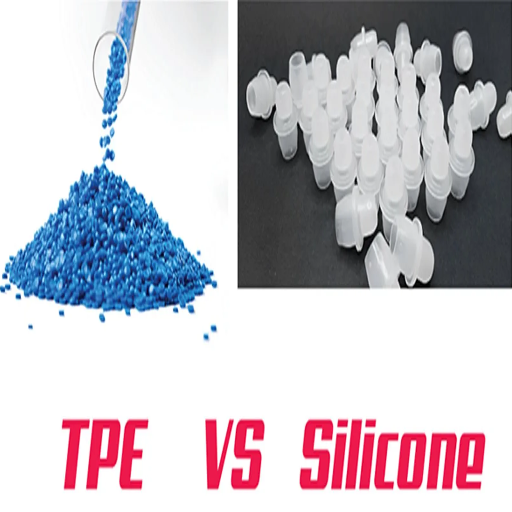
Thermal and Mechanical Properties
In contrast to silicone, TPEs exhibit distinct thermal and mechanical properties and are, hence, used for different applications. TPE traditionally exhibits fairly low thermal resistance, ranging from -40°F to 275°F (-40° to 135°C), primarily due to variations in grade. Silicone helps in providing excellent thermal stability, which can perform over a much wider range of temperature, somewhere from -85°F to 500°F (-65°C to 260°C). Silicone is thus the perfect choice for keeping extremes of heat or cold away, for instance, in automotive or food processing arrangements.
| Property | TPE | Silicone |
|---|---|---|
| Temperature Range | -40°F to 275°F (-40°C to 135°C) | -85°F to 500°F (-65°C to 260°C) |
| Elasticity | Excellent – ideal for frequent bending/compression | Good – maintains flexibility at temperature extremes |
| Tear Resistance | Superior – excellent for seals, gaskets, sports equipment | Good – high tensile strength |
| UV Resistance | Moderate – may degrade in harsh outdoor conditions | Excellent – superior aging and weathering resistance |
| Processing | Easy injection molding and extrusion | Requires specialized molding techniques |
By virtue of its elasticity and tear resistance, TPE is mechanically ideal for use in products that experience frequent bending or compression, such as seals, gaskets, and sports equipment. Silicone, on the other hand, displays very high tensile strength and offers excellent resistance to degradation through weathering, alongside aging UV light and ozone attack. These qualities serve to maintain the integrity of a silicone in harsher outdoor environments or in a much more demanding environment of stress than would ever be asked of TPE. Speaking in terms of balance, this very difference allows manufacturers to choose the material that best satisfies the performance and durability needs of any given application.
Chemical Resistance and Durability
In making industrial working conditions, different levels of chemical resistance and durability are demanded, thereby giving rise to a diverse choice in silicone and rubber. Silicone exhibits good resistance to many chemicals, including acids, alkalis, and solvents, making it particularly suitable in environments exposed to harsh chemicals. Silicone is one of the few materials resistant to extreme temperatures (-75°F to 450°F), thereby retaining its qualities without degradation even when subjected to heat or freezing conditions. Rubber, depending on its chemical resistance, varies significantly with respect to its composition. Some types are less resistant to oils and fuels, while perfect for the job, such as nitrile rubber, and natural rubber, in contrast, possessed poor performance in these cases but good flexibility and elasticity.
The durability of the materials is also emphasized, considering that silicone has better performance in ozone, UV, and weathering, as well as in prolonged exposures. This renders silicones an ideal selection for long-term and outdoor applications with long service life. However, rubbing conditions where the resistance of rubber against wear is greater than that of silicone, thus emphasizing its use in situations where high friction is needed, such as conveyor belts or tires. Therefore, depending on the particular chemical and environmental demands of an application, either material could be chosen.
Processing Techniques: Injection Molding vs Overmolding
Injection molding and overmolding are two primary manufacturing techniques that have been extensively employed in various industries to produce intricate parts and components. Both of these processes are used to create elaborate, precise, and robust designs; however, the applications they serve are distinct.
Injection molding involves injecting molten material, such as plastic or silicone, into a mold cavity that has been specifically designed. Upon cooling and hardening, the material takes on the shape of the mold, making it suitable for mass production of uniform parts. Data indicates its efficiency in terms of production speed and material savings, thereby making it very cost-effective for industries such as automotive, medical, and consumer goods. It is suitable for creating complex parts due to the tight tolerances and fine details it can achieve. Newer manufacturing methods, such as the use of thermoplastic and thermoset materials, have expanded the realm of injection molding.
In contrast, overmolding builds upon injection molding and involves the deposition of a second layer of material onto an already shaped substrate. In other words, functionality is enhanced by combining materials, such as hard and soft polymers, to achieve cornering ergonomics, durability, and/or cushioning. Overmolding is typically applied in assemblies to achieve greater functionality in areas such as toothbrush handles, power tools, and electronic device housings. Through key data, assembly processes are streamlined; i.e., assembly costs are reduced, and performance is improved upon integrating two materials into a single structure.
When choosing between injection molding and overmolding, key considerations include design intricacy, the combination of materials to be used, production volume, and budget. Injection molding is often the technique of choice for producing large quantities of uniform, standalone components. In contrast, when products require enhanced properties or tactile features, overmolding serves that purpose well. An understanding of the advantages posed by these processes will go a long way in helping manufacturers optimize their production strategies depending upon the requirements of the projects.
Advantages and Disadvantages of TPE and Silicone
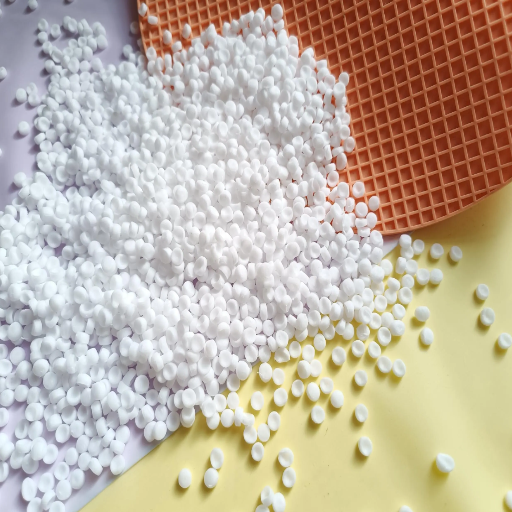
Pros and Cons of Thermoplastic Elastomers
Thermoplastic elastomers have unique properties that endow them with versatility and a widespread usefulness in manufacturing. Listed below are the advantages and disadvantages:
✓ Advantages
- Versatility and Flexibility: TPEs are an interesting class of materials that have both the yield flexibility of rubber and the processability of plastics. They will find utility anywhere from automobile parts to consumer goods.
- Recyclable Nature: Traditional rubber cannot be heat-reformed, whereas being a thermoplastic, the TPEs can be easily reheated and reprocessed. So, thermoplastics are greener as less material waste is generated.
- Cost Effectiveness: TPEs tend to be far more cost-effective to manufacture than options such as silicone, as production time is reduced and processing becomes easier.
- Customizability: TPEs can be customized to suit various properties, including hardness, color, and wear and chemical resistance, thereby making them useful in numerous industries.
- Lightweight Nature: TPE materials typically have a lower density than other elastomers, providing a lighter option suitable for the automotive and electronics industries.
✗ Disadvantages
- Temperature Sensitivity: They exhibit rather inadequate thermal resistance compared to silicones, whose utilization becomes compromised at high-temperature settings.
- Limited Durability in Harsh Conditions: Unlike traditional rubbers and silicones, they are prone to degrade when exposed to weather conditions, chemicals, or UV rays.
- Higher Material Costs Than Traditional Plastics: Although they may be the cheapest from a manufacturing perspective, basic TPE raw materials can be expensive, especially for specialized formulations.
- Reduced Strength Over Time: Under prolonged use, TPE often loses some of its elasticity and mechanical properties, depending on the specific conditions of use.
- Performance Trade-Offs: These customizations of TPEs for specific cases, such as enhanced flexibility and chemical resistance, may also compromise other performance characteristics.
By understanding the pros and cons of TPE, manufacturers and product designers can choose the right material for their requirements, ensuring proper functionality without compromising on cost or environmental impact.
Benefits and Drawbacks of Silicone Rubber
On the positive side, silicone rubber offers superb thermal stability, resisting temperatures from -75°F to 500°F (-59°C to 260°C) without compromising flexibility or mechanical properties. It is chemically resistant and thus durable in harsh environments, resisting oxidation, ultraviolet rays, and ozone exposure—a valuable feature of silicone rubber in outdoor and industrial applications. Being biocompatible, silicone is highly considered for medical and food-grade usage. Some other insulation-related advantages are the very high electrical resistance, which is ideal for devices that require materials to be non-conductive. Silicone exhibits extremely low compression set and great sealability, which are particularly beneficial in gasket, O-ring, and sealing applications.
✓ Silicone Benefits
- Exceptional thermal stability (-75°F to 500°F)
- Superior UV and weather resistance
- Excellent biocompatibility for medical use
- Outstanding electrical insulation properties
- Low compression set for sealing applications
- Chemical resistance to acids, alkalis, and solvents
✗ Silicone Drawbacks
- Higher production costs compared to other elastomers
- Lower mechanical properties (tensile strength, tear resistance)
- Susceptible to swelling from organic oils and fuels
- May require reinforcement for heavy-duty applications
- Soft properties limit load-bearing capabilities
- More complex processing requirements
Disadvantages: Like any other material, silicone rubber has some drawbacks. The higher cost of production makes it an expensive option compared to other elastomers, such as natural or synthetic rubbers. This may render it less feasible for price-sensitive applications. Its mechanical properties—tensile strength and tear resistance —are directly inferior when compared to other types of rubbers. Such a disadvantage might require reinforcement in applications involving even medium to heavy usage. It is inhibited by swelling in the presence of certain organic oils and fuels, limiting its functionality in the event of chemical exposure. Besides, because of its soft properties, it may not be fitting for load-bearing purposes.
Considering the advantages and disadvantages of silicone rubber, manufacturers and engineers can determine if it meets the specific needs of their projects in terms of performance and cost.
Selecting the Appropriate Material for Your Application
Selecting the ideal material for your application is a delicate balancing act between performance, environmental considerations, and cost. Silicone rubber, for instance, is an excellent alternative if extreme temperature conditions, flexibility, and electrical insulation are key concerns. It is, however, used by many industries, such as automotive, health, and electronics, for its special properties, including resistance to UV rays and aging.
In contrast, if high mechanical strength is required or constant exposure to very aggressive chemicals is expected, a better performance may be achieved with materials like fluorocarbon (FKM) or nitrile-based rubber (NBR). For instance, FKM exhibits excellent resistance to fuels and oils, making it the preferred sealing material in aerospace systems. On the other hand, NBR is considered highly cost-efficient and is, therefore, highly valued for resisting petroleum-based fluids in industrial applications.
When evaluating materials, specific use cases must be considered to collect data on tensile strength, elongation capacity, thermal properties, and other relevant properties. For example, temperatures ranging from about -75°F to 450°F (-59°C to 232°C) are well supported by silicone, whereas other materials may degrade under such extremes. Other considerations in selecting a material include environmental exposures such as ozone, UV, or moisture.
When focused on performance criteria, combined with such a level of detail, the selection ensures that the material not only meets technical requirements but also operates satisfactorily within operational conditions, resulting in enhanced reliability and long-term cost-saving opportunities.
Applications of Thermoplastic Elastomers and Silicone
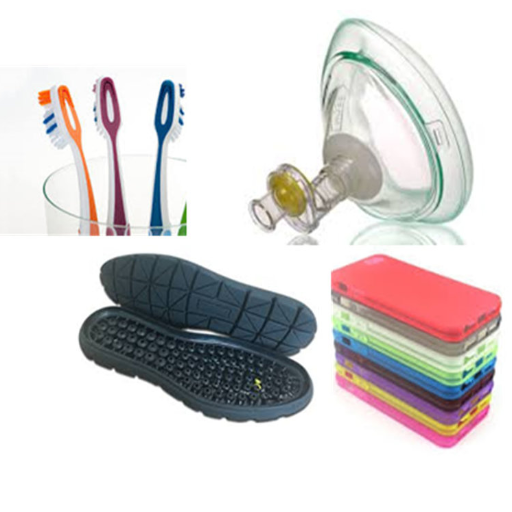
Common Applications of TPEs Across Various Industries
Thermoplastic elastomers (TPEs) are highly valued for their versatility, which confers the processing advantages of thermoplastics with the elasticity of rubbers. Given their flexibility, durability, and cost-effective performance, these materials are used in various industries.
1. Automotive Industry
In the automotive industry, TPEs have found wide industrial applications in sealing systems, gaskets, and interior components, such as floor mats and dashboards. They need to be flexible, lightweight, and able to withstand harsh environmental conditions to help vehicle operators enhance the efficiency and comfort of their vans. This property of recyclability helps the automotive industry meet sustainability requirements.
2. Medical and Healthcare Applications
The medical industry frequently utilizes TPEs for applications like tubing, syringe plungers, and wearable medical devices. These materials are ideal for healthcare settings due to their biocompatibility, sterilizability, and a wide range of customizable properties, including softness and transparency. They also offer latex-free solutions, reducing allergy risks for patients and staff.
3. Consumer Goods
TPEs are commonly found in everyday products, such as soft-touch grips for tools, toothbrushes, and kitchen utensils. Their ability to combine tactile comfort with durability enhances customer experience, while their ease of colorability supports visually appealing designs.
4. Electronics
TPEs are often used for cable insulation, connectors, and device grips in the electronics field. Their abrasion resistance ensures a longer lifespan for electronic products, and the electrical insulating property provides assurance of safety during prolonged use.
5. Construction and Infrastructure
The construction applications of TPEs include window seals, expansion joints, and roofing membranes. These require long-term weathering properties, UV resistance, and flexibility to temperature changes in all facets of residential and commercial work.
By customizing the properties of TPEs to meet different requirements, industries benefit from better-performing products, and consumers gain enhanced utility and dependability. The continuous development of TPEs introduces new solutions across various sectors, driven by advancements in polyester engineering and sustainable ideologies.
Applications of Silicone Rubber in Real Life
Silicone rubber stands out as a versatile material widely used across multiple industries due to its durability, flexibility, and resistance to extreme temperatures. One of its most prevalent applications is in the medical field, where it is used to produce implants, catheters, and medical tubing. Silicone’s biocompatibility and hypoallergenic properties make it an ideal choice for such applications, ensuring safety and reliability.
Another key area of application is in the automotive industry. Silicone rubber is used to create hoses, gaskets, seals, and spark plug boots, as it can withstand high temperatures and provide long-lasting performance under stressful conditions. Similarly, in the electronics sector, silicone has vital applications in insulating materials for cables and components, protecting them from heat and electrical interference.
Sealants and adhesives also use silicone rubber. It provides weather-resistance features, guaranteeing an everlasting performance in harsh conditions. The industrial uses of silicone rubber include closing windows, facades, and roofing systems. On the other hand, it is also considered safe and toxin-free by consumers when being used for cooking utensils, baby products, and wearable items.
Further developments in silicone rubber have enhanced its prospects, including the creation of transparent grades for optical applications and high-performance varieties for industrial machinery. This consequently opens up new opportunities on a daily basis, making silicone an indispensable material in modern manufacturing and design.
Innovative Uses of Liquid Silicone Rubber (LSR)
In the manufacturing world, LSR gained fame for its incredible adaptability, durability, and precision in molding. It is nontoxic and resistant to harmful chemicals. It can undergo extreme temperatures without being impaired, making it the best candidate for manufacturing medical devices such as syringe stoppers, respiratory masks, and implantable components. The biocompatibility of LSR ensures that it is safely accepted and used in the medical field while complying with all strict compliance requirements.
The electronics sector uses LSR to manufacture protective seals, gaskets, and connectors. Due to the LSR material’s dielectric properties, isolation is ensured, thereby guaranteeing the safety and reliability of sophisticated electronic devices. This, in turn, makes it necessary for it to be used in the making of LED lenses and optical components due to its transparency and anti-yellowing characteristics.
Another application considered innovative is in the automotive industry, where it is employed in the manufacture of precision engine components, O-rings, and weather-resistant seals. LSR is preferred by automakers considering its resistance to oils, fuels, and adverse weather conditions. With the rise of industrial automation, LSR has found application in robotics for grippers and sensory components, exploiting its flexible and soft-touch properties.
The increasing need for sustainable manufacturing has therefore promoted eco-friendly LSR grades, which help eliminate waste through optimized injection molding processes. These innovations do not only make the processes more efficient but also serve to place LSR as a material that fits in with current sustainability goals.
Conclusion: Making the Right Choice Between TPE and Silicone
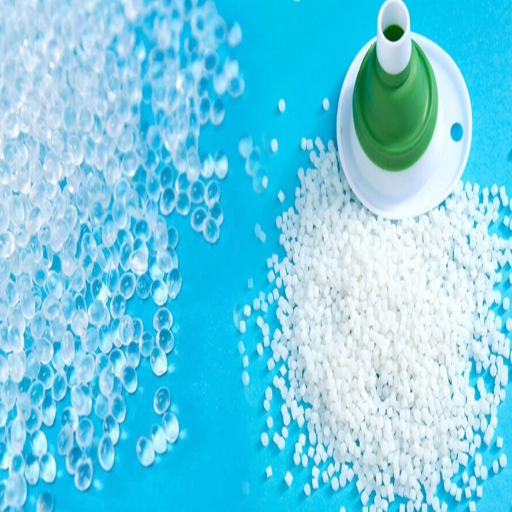
Factors to Consider When Choosing Between TPE and Silicone
When choosing between TPE and silicone for a specific application, one must balance the primary factors that affect the material’s performance, lifespan, and cost. Included below is a key consideration checklist to help sort through the decision-making factors:
- Application Requirements: Generally, TPEs are considered softer than silicones because they are more flexible and soft. Here, the TPE would be used where a soft material is required, such as in ergonomic grips, seals, and over-molded products. In contrast, silicone would be preferable for high-temperature exposure or an application where biocompatibility is a necessity, such as in medical devices or cookware.
- Temperature Resistance: Silicone exhibits excellent thermal stability, maintaining its properties even at extreme temperatures ranging from -76°F to 500°F (-60°C to 260°C), making it suitable for applications in the automotive, aerospace, and industrial sectors. TPE can withstand heat but generally works well at milder temperature ranges, making it an excellent choice for everyday applications.
- Durability and Chemical Resistance: Silicone exhibits a high degree of inherent chemical resistance to oils, UV rays, and environmental factors, thereby providing long-term durability for outdoor and industrial applications. In contrast, TPE degrades fairly easily under aggressive chemical exposure but compensates for this by being more resistant to tearing and abrasion in less stress-bearing environments.
- Considerations for Sustainability: A slight change in materials is required to accommodate the new trend of green manufacturing. Being non-biodegradable, silicone is recyclable in specific closed-loop systems, whereas, from a reuse and recycling perspective, TPE appeals to industries needing almost zero-waste production cycles. Furthermore, customizing TPE with bio-based grades supports the sustainability agenda.
- Cost Efficiency: Budgetary constraints could also restrict the choice of material. In general, TPE offers lower manufacturing costs due to shorter molding cycles and lower material costs. In contrast, silicone, with its superior performance characteristics, often comes at a steep price and must therefore be justified by the specific needs of the application itself.
- Regulatory and Safety Compliance: Industries such as healthcare, food, and electronics have very rigorous criteria for material safety. Silicone is accepted chiefly as FDA-approved and hypoallergenic, assuring compliance in such sensitive areas. However, TPE, if tailored to particular industries—such as medical-grade TPE—could theoretically meet the same standards, but might require an additional review.
Once weighed against these considerations, decision-makers can ensure that the chosen materials fulfill performance objectives, address environmental concerns, and limit losses, thereby arriving at a win-win situation between value and functionality. A concise digest of this consideration remains in conjunction with long-term prognosis in multifaceted industrial sectors.
Future Trends in Elastomer Technologies
Some future elastomer technologies I see germane to the trends will be few. One of the most significant pushes is toward sustainability. Bio-based and recyclable elastomers are on the rise due to increasing regulation and direct requests from the end consumers. I think the perspectives that can be developed for these materials would somehow eliminate the environmental issues and will also offer new avenues for innovation, especially in automotive and consumer goods firms where sustainability is what really counts.
Another critical trend I anticipate is the integration of innovative materials into elastomer technologies. Additives and design innovations are enabling elastomers to become more adaptable, conductive, and responsive to stimuli such as heat, pressure, or electricity. This evolution has implications for a wide range of applications, from wearable electronics to medical devices. I’m excited about how these innovative elastomers will transform the way we approach design, allowing for higher functionality while maintaining flexibility and durability.
Lastly, I envision significant momentum in manufacturing technologies, such as 3D printing and precision molding, which enable the manufacture of complex elastomeric structures with unprecedented efficiency. This accelerates prototyping and customization, allowing the firms to stay competitive in the market. With these advancements on one hand and computational modeling on the other, I envision elastomers being designed down to the molecular level for each application, tailored to its performance needs. Industries will act as a conduit for such innovations, whether in aerospace or robotics. All these trends point toward a future wherein elastomer technologies will be the cornerstone for sustainable, innovative solutions.
Closing Remarks on Thermoplastic vs. Silicone
When choosing between thermoplastics and silicone, it ultimately comes down to the application and the required performance criteria, in my opinion. Thermoplastics are highly versatile and may be characterized by durability, cost, and recyclability. Being able to be remelted and reshaped, thermoplastics are an excellent choice in iterative design approaches, mass production, and instances where recycling is encouraged. This adaptability places thermoplastics in the best position to satisfy end-users in fields such as automotive, packaging, and consumer goods, where speed to market and price are paramount.
On the other hand, silicone offers excellent properties, including high heat resistance, flexibility, and biocompatibility, which make it paramount in applications requiring stable performance under extreme conditions. From medical devices to aerospace components, a silicone-based chemical property can surely navigate well where another material might fail. Silicone usually has an initial cost higher than that of other materials. Still, its application in highly stressful environments is a case where the price is often warranted, particularly for niche applications.
Depending on thermal tolerance considerations, mechanical requirements, cost considerations, and sustainability objectives, the choice lies between thermoplastics and silicone. Each side has its strengths; most of the time, the art lies in exploiting them in creative ways to develop solutions that are in themselves highly engineered to suit the particular requirements of each task.
Reference Sources
-
TPE vs. Silicone: Which is Better? | Timco Rubber
Discusses the differences in properties like compression set and applications of TPE and silicone. -
All About the Differences Between TPE and Silicone | Xometry
Provides a detailed comparison of thermoplastic elastomers and silicone, including their manufacturing processes and uses. -
Thermoplastic Elastomer (TPE) vs. Liquid Silicone Rubber | Kaysun
Explains the main differences in heat reaction and reprocessing capabilities between TPE and silicone. -
7 Uses of Thermoplastic Elastomers and Their Differences | Xometry
Highlights the industrial applications of TPEs, such as seals, vibration isolators, and shock absorbers. -
Thermoplastic Elastomers: Manufacturing Medical Devices | Comar
Focuses on the use of TPEs in medical devices and other specialized applications. - View Plastic Pellets Manufacturers in China

